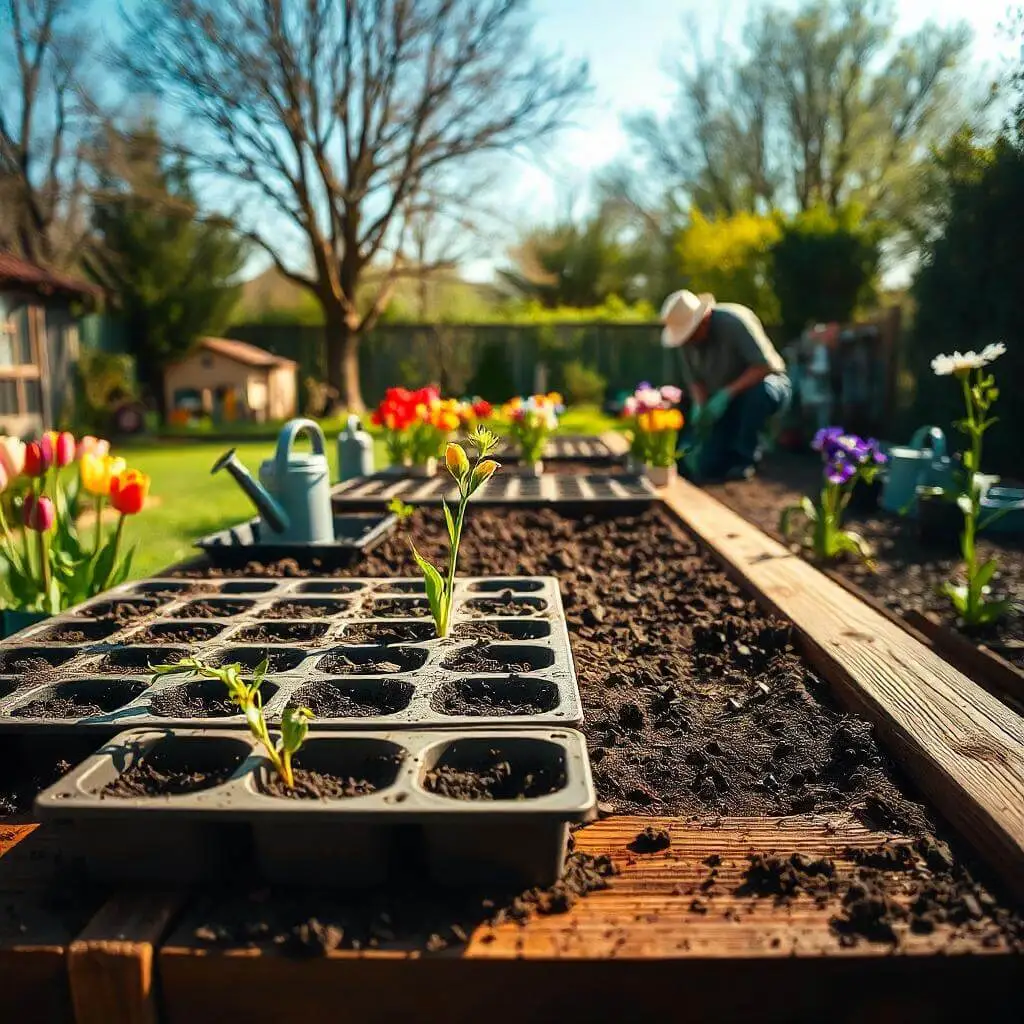
As the frost melts away and days grow longer, gardeners everywhere feel the excitement of spring. Preparing your garden for the growing season is essential for a healthy, thriving garden. From soil preparation to planting ideas, this guide covers everything you need to ensure your garden is ready to bloom.
1. Start with a Garden Cleanup
Before planting, clear out winter debris to make space for new growth.
- Remove Dead Leaves and Weeds: Eliminate any leftover weeds and rake out dead leaves to prevent pests and diseases.
- Prune Trees and Shrubs: Trim back any dead or damaged branches to promote healthy growth.
- Clean Garden Tools: Disinfect tools to prevent spreading diseases to plants.
2. Test and Improve Your Soil
Healthy soil is the foundation of a productive garden. Start by testing your soil for pH levels and nutrients.
- Soil Test Kits: Use a kit from your local garden store or send samples to a lab for detailed results.
- Amend Soil as Needed: Add compost, manure, or fertilizers to improve texture and nutrient content. For acidic soil, add lime; for alkaline soil, add sulfur.
3. Plan Your Planting Layout
Decide what you want to grow and plan your garden layout accordingly.
- Consider Companion Planting: Pair plants that support each other, such as tomatoes with basil or carrots with onions.
- Rotate Crops: Avoid planting the same crops in the same spot as last year to prevent nutrient depletion.
- Plan for Sunlight: Group plants based on their sunlight needs to maximize growth.
4. Choose the Right Plants
Spring is ideal for planting cool-season crops and flowers.
- Vegetables: Start with lettuce, spinach, peas, and radishes.
- Herbs: Parsley, cilantro, and dill thrive in early spring.
- Flowers: Plant pansies, daffodils, and tulips for vibrant color.
- Perennials: Add hardy options like hostas and daylilies for lasting beauty.
5. Prepare Your Garden Beds
Ensure your garden beds are ready to support new growth.
- Loosen the Soil: Use a tiller or garden fork to aerate compacted soil.
- Add Organic Matter: Mix in compost or aged manure for added nutrients.
- Mulch Early: A layer of mulch retains moisture and keeps weeds at bay.
6. Start Seeds Indoors
Get a jump on the growing season by starting seeds indoors.
- Use Seed Trays or Small Pots: Plant seeds in nutrient-rich soil.
- Provide Ample Light: Place trays near a sunny window or use grow lights.
- Harden Off Plants: Gradually expose seedlings to outdoor conditions before transplanting.
7. Check Irrigation Systems
Ensure your plants will have adequate water throughout the season.
- Inspect Hoses and Sprinklers: Repair leaks or replace damaged parts.
- Install a Drip System: Drip irrigation delivers water directly to the roots, conserving moisture.
- Set a Watering Schedule: Keep soil consistently moist but not soggy.
8. Attract Pollinators
Encourage bees, butterflies, and birds to visit your garden.
- Plant Pollinator-Friendly Flowers: Choose blooms like lavender, marigolds, and sunflowers.
- Provide Water Sources: A shallow dish of water with stones for perching helps pollinators stay hydrated.
- Avoid Pesticides: Opt for natural pest control methods to protect beneficial insects.
Conclusion
Preparing your garden for spring is a rewarding process that sets the stage for a bountiful growing season. With proper cleanup, soil preparation, and thoughtful planting, you’ll create a thriving outdoor space that’s bursting with life and color. Roll up your sleeves, get your hands dirty, and enjoy the journey as your spring garden comes to life.